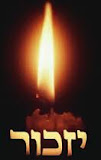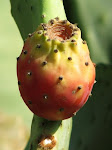"Gonna lay down my burden/Down by the riverside/Down by the riverside/Down by the riverside......
I ain't goin' study war no more".
I ain't goin' study war no more".
I was humming the melody of the above famous black gospel as I approached the Dambovita River which crosses the heart of Bucharest city (it goes from north-west to south-east along a distance of 22 Km). I stopped the humming when I reached the spot. How on earth does one get down by the river? it's all cement around here.
Dambovita river at Unirii Square
The legend has it that the city of Bucuresti (Bucharest) was named after the shepherd Bucur that lived on the banks of the river . Dambovita was the name of his fiancee, the daughter of a poor forest man, who had rejected the marriage proposal of a prince because of her love and loyalty for the shepherd . How very romantic!
The river, however, didn't seem romantic to me. Perhaps the cloudy day was to blame for that: the sky and water looked grey and gloomy. I contemplated it from the bridge (The river has sixteen[16!]) bridges). It flows through a cement canal built to prevent flooding. All the river's natural turns have been canalized throughout the years.
There's no navigation on the river, no boat tours. Despite pollution, the locals jump into its cool water during the hot days of summer; many of them even practice fishing. Last month, by the way, a catfish of 40 Kg and 1.5 m long, was captured in the Dambovita by some amateur fishermen. It was quite a sensation.
There are guided walking tours covering the part of the river that crosses the center of Bucharest. The tour starts in the city center at Unirii Square and ends at the Opera Square. It lasts about 2 hours and 30 minutes. The tourists are shown buildings which either face the river or are close to the river, buildings that have played and still play an important role in the locals' life such as: Manuc's Inn, The Palace of Justice, House of the People (the Parliament), The Opera House, and many other landmarks.
The Palace of Justice
The above palace has six statues near the entrance, allegoricaly symbolizing:
Law, Truth, Strength, Justice, Righteousness, Prudence.
The above palace has six statues near the entrance, allegoricaly symbolizing:
Law, Truth, Strength, Justice, Righteousness, Prudence.
























































